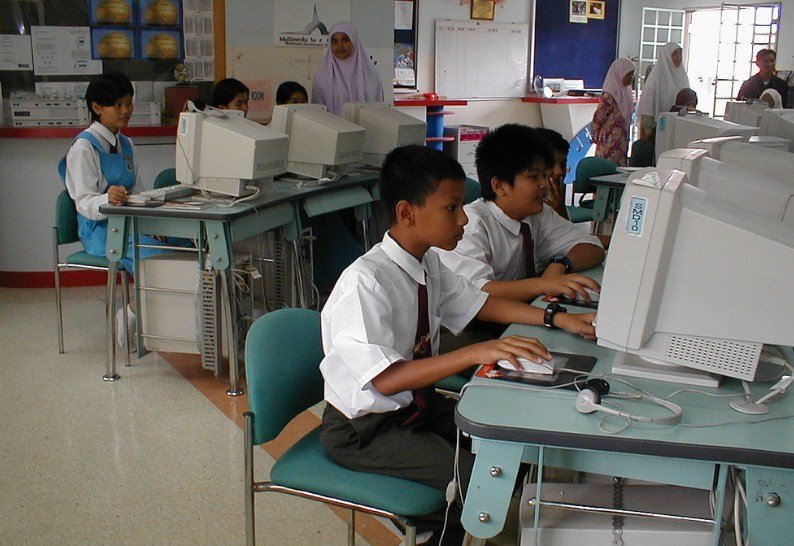Technology is a powerful tool that can transform the lives of children with disabilities. It can help them access quality education, overcome learning barriers, and participate in social activities. In this article, we will explore how technology can be harnessed to promote quality education and social inclusion for children with disabilities in Uganda and beyond.
Technology Can Make Learning Materials More Accessible
One of the challenges that children with disabilities face in education is the lack of accessible learning materials. Many textbooks, worksheets, and exams are not designed for children with different needs and abilities. For example, children with visual impairments may not be able to read printed text, while children with hearing impairments may not be able to hear audio recordings.
However, technology can provide solutions to these challenges. Assistive technologies such as text-to-speech software, braille e-books, and speech recognition apps can make learning materials more accessible for children with disabilities. For instance, children with visual impairments can use braille e-books to access the same textbooks as their peers. Similarly, children with hearing impairments can benefit from subtitles and sign language interpretation apps. Children with physical impairments can use adaptive keyboards, mice, or voice recognition software to interact with computers and other devices.
These assistive technologies can enable children with disabilities to learn independently and confidently. They can also reduce the dependence on special educators and caregivers, who may not be available or trained enough to support them.
Technology Can Provide Personalized Learning Experiences
Another challenge that children with disabilities face in education is the lack of personalized learning experiences. Many classrooms follow a one-size-fits-all approach that does not cater to the diverse needs and preferences of learners. For example, children with cognitive impairments may struggle to keep up with the pace and complexity of the curriculum, while children with giftedness may feel bored and unchallenged.
However, technology can provide solutions to these challenges as well. Digital platforms can provide personalized learning experiences tailored to each child’s needs. Adaptive learning software can adjust the difficulty level of tasks based on the child’s performance, ensuring that they are always challenged but never overwhelmed. This allows them to learn at their own pace, level, and style. For example, children with cognitive impairments can use multimedia tools that provide multiple modes of representation and expression. This personalized approach can significantly enhance learning outcomes and motivation.
Technology Can Promote Social Inclusion for Children with Disabilities
Beyond education, technology can also promote social inclusion for children with disabilities. Social inclusion is the process of ensuring that everyone has equal opportunities to participate in society and enjoy a sense of belonging. However, many children with disabilities face social isolation and exclusion due to stigma, discrimination, and physical barriers.
However, technology can provide solutions to these challenges as well. Social media platforms, online forums, and virtual reality can provide safe spaces for children with disabilities to interact with their peers, express their thoughts, and develop a sense of belonging. Children with disabilities can also use social media, blogs, or podcasts to share their experiences and opinions with a wider audience. They can also access information and resources that can empower them to advocate for their rights and interests.
Technology can also help children with disabilities connect with role models and mentors who can inspire them and guide them in their personal and professional development. For example, the Academy of Whole Learning, a K–12 private school in Minnesota for students with autism spectrum disorder and individual learning needs, introduced virtual reality technology in their classrooms. Students could take a tour across the world — from the Great Barrier Reef to the North Pole — without ever having to leave their classroom. The immersive VR experience helped students stay focused and engaged during their lessons. It also gave students an opportunity to practice social skills1.
Technology Can Be a Game-Changer for Children with Disabilities
The potential of technology to promote quality education and social inclusion for children with disabilities is immense. However, realizing this potential requires concerted efforts from various stakeholders, including governments, educators, parents, civil society organizations, and private sector partners. They need to work together to ensure that technology is accessible, affordable, appropriate, and sustainable for children with disabilities.
They also need to address the digital divide that exists between urban and rural areas, as well as between developed and developing countries. According to UNICEF, only 35 percent of households in low- and middle-income countries have internet access at home. This means that millions of children are missing out on the opportunities that technology can offer.
Moreover, they need to ensure that technology is used in an ethical and responsible manner that respects the dignity and privacy of children with disabilities. They need to protect them from cyberbullying, online predators, misinformation, and other online risks.
Technology is not a magic bullet that can solve all the problems that children with disabilities face in education and society. However, it is a powerful tool that can enhance their learning outcomes, empower their voices, and enrich their lives.

